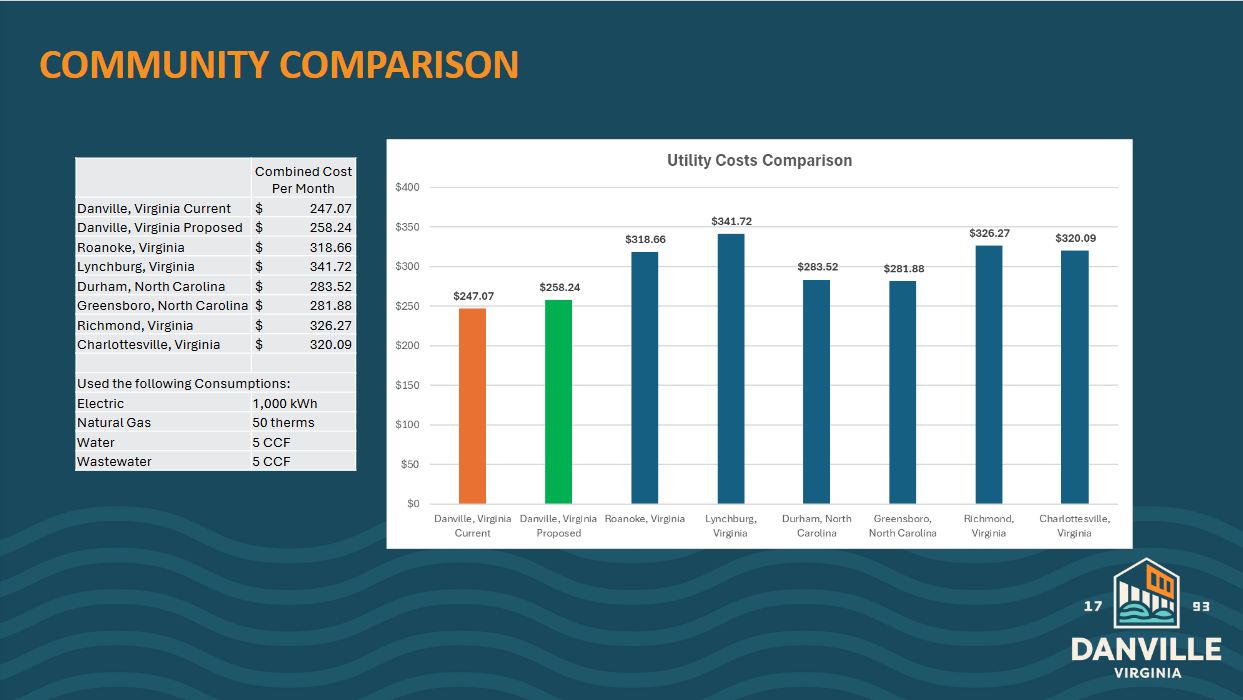Danville’s director of utilities, Jason Grey, will present data comparing the city’s water, wastewater, electric and natural gas rates to those in other communities at the utility commission’s regular meeting Monday at 4 p.m.
The city is considering upping its utility rates based on a biennial rate study. The cumulative average increase for ratepayers who use all utility services is between $10 and $11 per month. This change would not be in effect until the next fiscal year, which starts July 1.
The city council will have the final say on this proposed change. The vote will happen sometime this spring, Grey said.
His presentation to the utility commission will cover the water, wastewater, electricity and natural gas services provided by Danville, which is the only municipality in Virginia that operates all four essential utility services.
Danville has been in the utility business since 1876 and serves Danville, most Pittsylvania County households and also portions of Henry and Halifax counties. 
According to presentation slides included in the meeting’s agenda packet, Danville has almost 38,000 residential customers. There are also just over 5,000 commercial customers, about 30 industrial customers and over 14,000 streetlighting or customer light customers.
There has been a 25-megawatt increase in load in 2024, which the presentation primarily attributes to four customers.
Tyson Foods contributed 10 MW, Aerofarms contributed 6 MW, the ADTM program run by the U.S. Navy contributed 5 MW and Caesars Virginia contributed 4 MW.
Also according to the presentation, Danville has a lower combined cost of utilities than Charlottesville, Lynchburg, Richmond and Roanoke as well as Durham and Greensboro, North Carolina. This is still the case with the proposed rate increase, says the presentation.
The combined monthly cost of utilities in Danville is $247 now and could be about $258 with the rate increase. Greensboro, the next cheapest of the included localities, has a combined monthly cost of $281.
Grey’s report will also include information about the city’s history as a utility provider, its energy sources, electric load and the rates of different energy providers.



